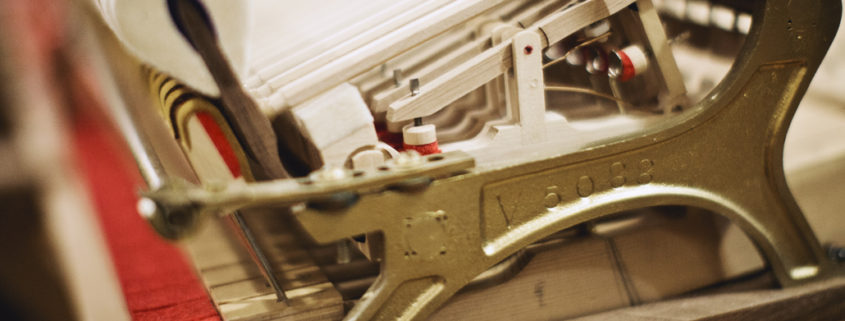Many piano actions greatly benefit from weight redistribution, geometric changes (changes in position of the levers involved in getting the hammer to the string,) weight addition or reduction, parts repositioning, or a combination of the above coupled with precise action regulation. If you have or have recently purchased a grand piano, your piano may be a candidate for this work.
We’ve done this kind of custom action tweaking for years, to over a hundred piano actions, and our results are very consistent and repeatable. Piano work is not voodoo; it’s engineering, science and intuitive craft together. The old myths that a piano “feels like it feels” or that its touch, its feel, will fundamentally change once you “break it in” are, now, just pernicious old myths—now, we can focus the touch, the spielart of an action in a very precise way, so that a player can, in effect, “dial in,” by means of communication and work with us, just what he or she wants in terms of lightness or heaviness of touch, amount of resistance, and ease of repetition. We use the Stanwood protocols for evaluating the function of an action, which is based on measuring weight—which is what a pianist feels—rather than distance. We have found this to be an exponential improvement in the control we have over how an action feels.
If you go to a piano seller and play a rebuilt Steinway, it should feel light but not too light—and resistant, but not too resistant: substantial, fast and responsive, right then, to your fingers. If it doesn’t, there’s a good chance the work is “B” or “C” quality, as opposed to the “A+” quality of a custom restoration. One revealing strategy is to ask the seller for a complete list of the parts and protocols used to restore the instrument, and see what the reaction is.




